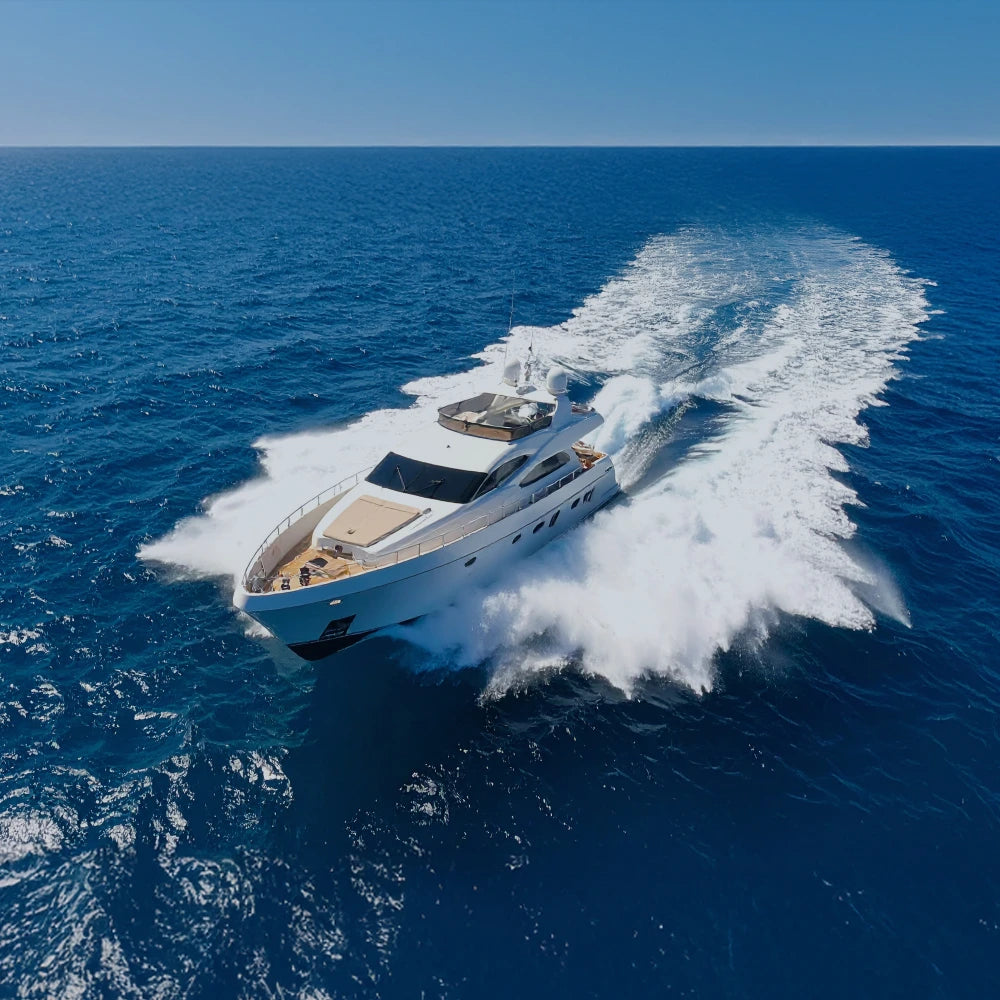Client
Overview
Hodges Marine Electronics is a trusted marine electronics dealer with over 20 years of experience, offering products from major manufacturers in the boating and marine industry. Established in 2005, the brand specializes in providing a great shopping experience at competitive prices for boat owners and marine enthusiasts.
Challenge
For years, Hodges Marine focused solely on Google Ads, relying on high-intent traffic from customers who were already searching for marine products. While Google Ads proved successful in capturing customers actively looking for boating equipment, returns began to diminish over time.
Despite this, Hodges Marine was skeptical about expanding into Facebook/Instagram ads, fearing they would not reach the right audience or see any return on investment. The challenge was to broaden their audience reach and prove that social media ads could complement their search-focused strategy.
Strategy
The strategy was to use Facebook/Instagram Ads to reach top-of-funnel audiences, people who may not be actively thinking about boating equipment but could be brought into the buying journey with the right exposure. The goals were:
• Increase brand awareness by targeting a broader audience.
• Capture customers earlier in the decision-making process to ensure Hodges Marine would be top of mind when they eventually considered purchasing equipment.
• Diversify ad formats to include:
- Product ads as a primary format, which performed exceptionally well and still makes up the bulk of their spend.
- Focus product ads: The creative team worked with Hodges to identify specific products to feature each month, showcasing them in both image and video formats to drive traffic to specific product pages.
Execution
The goal of expanding to Facebook/Instagram ads was to drive new customer acquisition and increase brand awareness at the top of the funnel. This was necessary because, while Google Ads effectively captured high-intent customers, Facebook/Instagram ads could introduce the brand to a broader audience, engaging potential customers who were not actively searching for marine products. Over time, as Facebook/Instagram ads began to optimize, it helped balance the marketing mix, increasing reach without sacrificing ROAS.
• Growth from June 2024 vs June 2025: Facebook/Instagram Ads Spend: Increased by over 120%
• Revenue from Facebook/Instagram Ads: Increased by approximately 160%
• ROAS for Facebook/Instagram Ads: Improved by 17%, meeting the brand’s target ROAS.
• Google Ads Spend: Decreased by 20%
• Conversion Rate increased by 20.5%
• ROAS for Google Ads: Improved by 16%
The significant increase in spend on Facebook/Instagram Ads resulted in substantial revenue growth, improving cost-efficiency and achieving the target ROAS. Meanwhile, Google Ads continued to maintain strong performance with optimized ad spend, driving more high-intent conversions despite the reduced budget.
RESULTS
Year-Over-Year Comparison (H1 2025 vs H1 2024)
Overall Marketing Spend (Google, Bing, and Facebook/Instagram Combined): Decreased by -16.64%
Conversion Rate: Increased by 20.5%
Overall ROAS: Increased by +14%
Despite the 16.64% reduction in ad spend across all platforms in 2025, ROAS improved by 14% YoY. The reduction in revenue was minimal, but the optimized ad spend still delivered comparable returns, showcasing that the marketing mix had become more efficient.
Insights:
Facebook/Instagram Ads played a key role in driving awareness and reaching new audiences, but the conversion rates weren’t as strong as Google Ads.
The shift to Facebook/Instagram ads helped make the overall strategy more efficient, with a reduced spend resulting in similar revenue and improved ROAS.
The spillover effect from Facebook/Instagram ads likely made Google Ads more efficient, as it brought in top-of-funnel traffic that was converted later by Google.
Grouping high-margin products together helped us maintain strong ROAS despite the decreased market demand for marine products.
Key Takeaways:
• Successful integration of Facebook/Instagram Ads into the marketing mix, driving new customers at a cost-efficient rate.
• ROAS improvements over time with consistent optimization and diversified ad formats.
• Increased brand awareness and early-stage customer engagement, boosting overall sales, alongside Google Ads.
The synergy between Facebook/Instagram and Google Ads ensured they didn’t cannibalize each other but worked together to maximize reach and conversions, achieving strong performance at a reduced ad spend.
Conclusion:
The shift to Facebook/Instagram ads may have started as a hesitant trial, but the long-term results show that Hodges Marine achieved a balanced, efficient ad strategy that continues to drive strong performance. By optimizing both channels, they expanded their reach, drove awareness, and optimized ad spend, leading to improved ROAS and sustainable growth. This case study demonstrates how multi-channel advertising can be a win-win for brands looking to scale efficiently.

